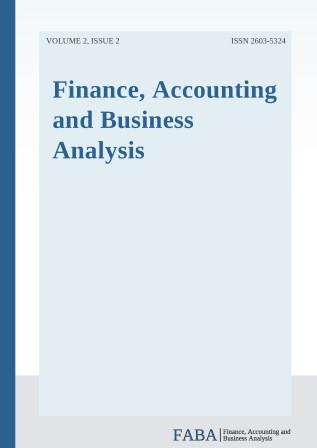Analysis of Stock Split Volatility in Stock Price on Indonesia Sharia Stock Index
Analysis of Stock Split Volatility in Stock Price on Indonesia Sharia Stock Index
Author(s): Femei Purnamasari, Miftahul Jannah, M. RidhanoyudistiraSubject(s): Economy, Financial Markets
Published by: Институт по публични финанси
Keywords: stock split; signaling theory; trading range theory; abnormal returns; stock prices;
Summary/Abstract: Purpose: Stock split is a stock price, stock liquidity is influenced by high low stock prices, and then the stock split is the right action to maintain stock liquidity so that the price becomes small and fluitive (Kurniawati, 2013). Stock price splitting is an event rarely performed by issuers. Currently, issuers carrying out stock split activities are still relatively few because basically stock split is only done by companies that have high share prices. If the performance of the company is good, the share price will be high, but if the stock price continues to rise, it will cause a decrease in investor interest to buy the company's shares due to high stock prices. This study aims to determine whether there is a stock price movement when the company is doing a stock split and to find out whether research on stock price movements caused by stock split is following signaling theory and trading range theory. Fluitive stock prices that are affected by stock split can be seen by calculating the abnormal return of the company's close price. If the result of the calculation has a negative effect then the stock split does not have a good effect on stock price liquidity but if it has a positive effect then the stock split gives a positive effect on stock price liquidity. This is what influencing researchers to conduct research in Indonesian Syariah Stock Index because there is still little research on stock split event in Islamic stock market. Methodology Approach: This study analyzes the movement of stock prices for 60 days, with following day calculation, 30 (thirty) days before the stock split, and 30 (thirty) days after the stock split. This study uses secondary data, namely data from reports of companies that have carried out a corporate action stock split and obtained data through the official website. The researcher uses close price data of daily stock prices from companies that make stock price splits and become part of 2018 Syariah Indonesia stock index. The independent variable in this study is the stock split and the dependent variable of this study is the stock price. 10 company populations were used in this study, and its testing was only conducted on 7 sample companies that met the criteria according to the purpose sampling method. In analyzing data the researcher used abnormal return analysis with the actual return-expected return method. The normality test used is Kolmogorov Smirnov test. Hypothesis testing use done-sample t-test and paired samples t-test, the author's process this research data using the program SPSS 18 (Yustisia, 2018). Findings: The final results of the test using paired sample t-test showed a very significant value that is 0.039 and smaller thanα= 0.05 which means there is a movement in stock prices for 30 (thirty) days before the stock split and 30 (thirty) days after the stock split, so this study concludes that the movement of sharia stock prices at ISSI 2018 is affected by the stock splitting event indicated by the results significant paired sample t-test. In the perspective of Signaling Theory and Trading Range Theory of 7 companies that conduct stock split, the results shown by this study are following both theories, namely, when a company does a stock split, the stock market shows the existence of stock fluctuations, both before the split event and after the split event The results of the calculation of the actual return of 5 companies experienced good liquidity, while 2 companies experienced liquidity, but not so fluitive. Practical Implications: Some researchers say that stock price movements are affected by stock split events, but some studies also say the opposite, this results in the incompatibility of previous research with the theoretical basis of signaling theory and trading range theory. Research on stock price movements influenced by stock split still produces different conclusion. This is the basis for conducting this research. Originality: Corporate action in the form of a stock split carried out by the issuer has an impact on the liquidity of stock prices, but it needs to be considered because internal factors of the company such as company performance will be taken into consideration. Besides internal factors, stock prices can also be influenced by external factors namely government policies or influential issues in investors' decision to continue buying shares or not. In this study there are significant stock price movements between events before and after the stock split. It is known that in testing 30 (thirty) days before the stock split event there was no stock price movement, but there was a significant stock price movement after 30 (thirty) days after the stock split.
Journal: Finance, Accounting and Business Analysis
- Issue Year: 2/2020
- Issue No: 2
- Page Range: 83-91
- Page Count: 8
- Language: English

